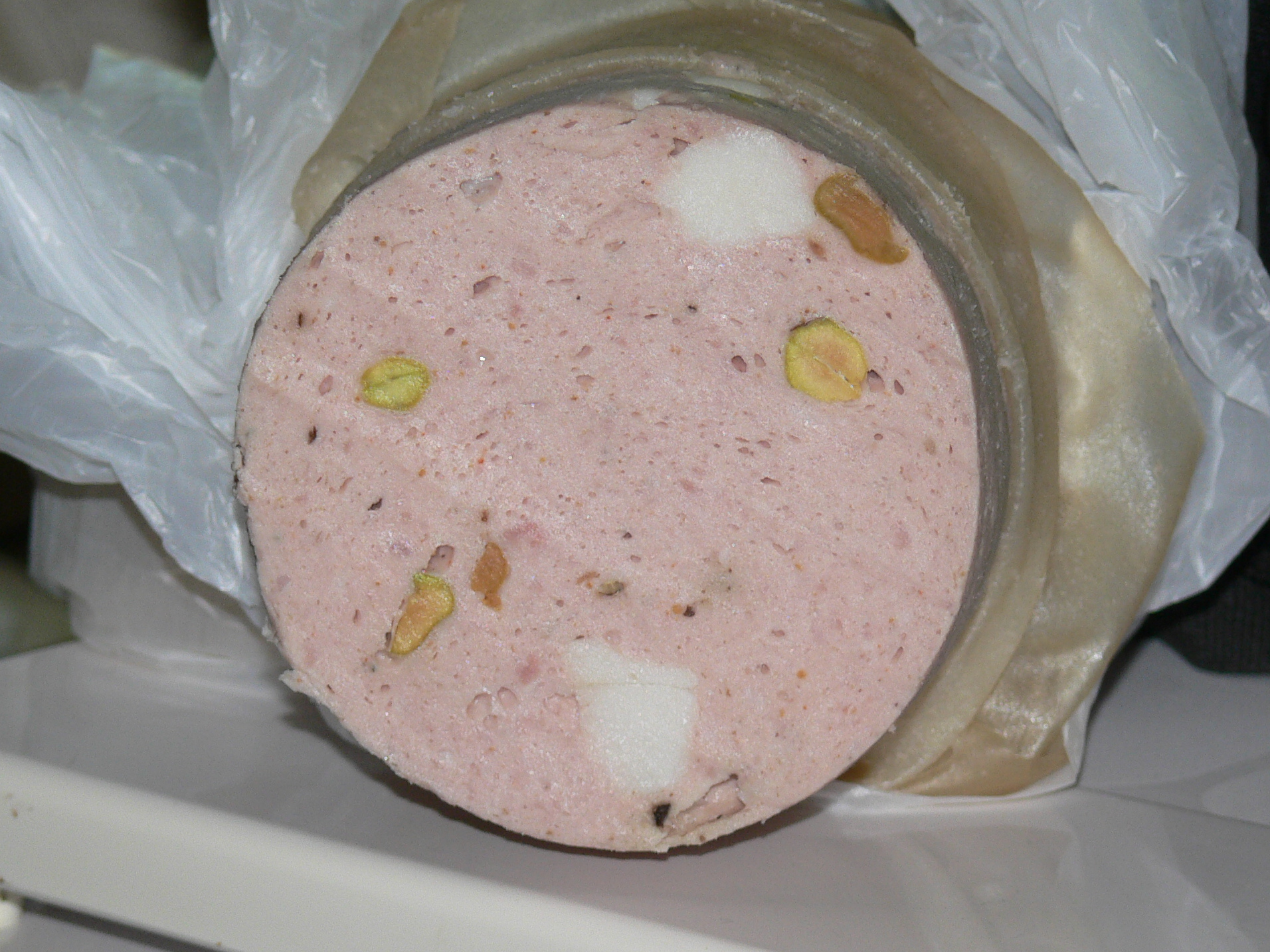It’s great to get back to doing some real sausage making. We’re fast running out of ham, bacon and sausage from my last mammoth session, so it’s time to clear all the frozen meat out of the freezer to make way for the next lot.
Given that the meat’s been frozen, it shouldn’t then be refrozen unless it’s been cooked – making fresh sausage is, therefore, a no, no. I was going to make hot dogs but the weather looked a bit iffy and I’m very much a fair-weather smoker, so that left a choice of the many and various other cooked sausages/luncheon meats.
I enjoy making Luncheon Meats, not least because they taste good, but also because no one expects you to. Big-headed, I know: I don’t care, it makes me feels good!
Mortadella is an Italian traditional cooked pork sausage that varies in size from quite small to enormous. Its major characteristic is the small pieces of fat dispersed throughout it. To be ‘traditional’ these should make up at least 15% of the total sausage – this version has less. The addition of pistachios or pine nuts is optional.
I take no credit for the recipe, it came to me via Jason Molinari who I understand got it from a book by Paul Bertolli: no doubt it’s had a few tweaks on the way! Salt seemed to have been omitted somehow – the amount I added was too little, I will increase it next time – I have altered the recipe to reflect this.
I won’t say that the recipe is easy, it isn’t. However, there’s nothing difficult about it if you’re careful. The cardinal rule is that everything must be kept very cold.
Here’s a very ‘snatched’ photo of the finished product perched on the edge of the fridge. Trust me to find a bit with badly dispersed nuts and fat, and air-holes to boot!

Ingredients
Pork Shoulder 630 gm
Pork Fat (1) 420 gm (Hard fat from the back or throat)
Crushed Ice 310 gm
Garlic Powder 1.7 gm
Dextrose 15 gm
Mace 2 gm
Coriander 1 gm
Cinnamon 1 gm
Cayenne 1 gm
Cubed fat (2) 75 gm
Pistachio nuts (optional) 25 gm (weighed after shelling and peeling)
Black Pepper lightly Crushed 2 gm
Salt 23 gm
Cure #1 1.5 gm
To make the calculations easy, you can use this online calculator:
Method
Firstly get everything really cold. Put your pork fat (1) into the freezer for about an hour before you will use it Put the pork shoulder in to join it for about ½ hour. If you can get your mincer and food processor attachments in as well, all the better.
Cut the Pork Fat (2) into small cubes and blanch them in boiling water for a couple of minutes, cool in iced water, and drain. Return them to a cold fridge.
Shell the pistachios then pour boiling water over them and leave them for one minute. The brown skins should now slip off quite easily. Refresh them in iced water then dry.
Weigh out your dry ingredients.
Mince/grind the pork and pork fat (1) separately through the medium plate on your mincer, then mince again through the finest plate you have. If, like me, you don’t have a mincer plate smaller than 4.5mm, mince three times through this plate. With a small mincer/grinder, you may want to put the meat and fat back into the fridge between mincings. (I didn’t because I have a large powerful mincer/grinder that doesn’t heat the meat up like a small one may).
Return the meat to the freezer for 10 – 15 minutes.
If you’ve not had your food processor bowl in the freezer, cool it with some ice. I crushed my ice in the processor but I’m not sure that this does the blade any good!
Put the pork shoulder in the food processor with ½ the ice and all the other ingredients except the pork fat, pistachios, and the black pepper. Process it until it’s smooth. Check the temperature often, stop if it gets to 8°C. Add the pork fat (1) and the remaining ice and process until it becomes a smooth paste. Do not let the temperature rise above 15°C
In a bowl, mix together the meat paste, pork fat (2), pistachios, and black pepper.
Fill into a large casing, maybe a beef (ox) bung or cap, try to avoid air pockets, tie the casing tightly when filled: I used a 90mm collagen casing, 120mm would be better.
Poach in water at 75 – 80°C until the internal temperature has been at, or just over 68°C, for at least 10 minutes. You could bake it at 75 – 80°C instead (but not with a collagen casing: they melt!).
Cool it quickly in iced water. When cool put it in the fridge for a day for the flavours to mingle.
This sausage contains none of the binders or phosphates so often used in this type of sausage to lock in the fat and water. It relies entirely on creating a suspension of water and fat, along with careful cooking, so as not to split the paste. The chemical reactions are similar to those found when making mayonnaise.
The recipe made a sausage approximately 10 inches long (250mm) in a 90mm casing. For larger sausages/casings you will need to increase the quantities.